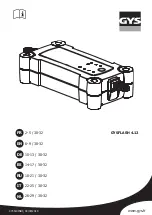
Chapter 5 - Wheels and tires
pg. 75 Wheels and tires
Wheels and tires
The handling and riding comfort of the vehicle is dependent on the inflation pressure and the type of tires fitted. Read
the following pages carefully.
General information, Wear indicator, Tire economy, Flat spots 76
Snow chains, Winter tires 77
Inflation pressure 78
Uniform tire quality grading 79
pg. 76 Wheels and tires
General information
Your vehicle is equipped with tires according to the tire information label located on the rear facing side of the
right front door.
The following is an
example
of a tire designation code 225/50R16:
225
= tire width in mm.
50
= tire profile. This is the relationship (in percent) between the section height and the width of the tire.
R
= radial tires.
16
= diameter in inches.
The tires have good road holding characteristics and offer good handling on dry and wet surfaces. It should be noted
however that the tires have been developed to give these features on snow/ice-free surfaces.
Certain models are
equipped with "all-season" tires, which provide a somewhat higher degree of winter roadholding on slippery
surfaces than tires without the "all-season" rating.
However, for optimum road holding on icy or snow covered
roads -
we recommend suitable winter tires on all four wheels.
When replacing tires, be sure that the new tires are
the same size designation, type (radial) and preferably from the same manufacturer, on all four wheels. Otherwise there
is a risk of altering the car's road-holding and handling characteristics.
NOTE:
When storing wheel/tire assemblies (e.g. winter tires and wheels), either stand the assemblies upright or
suspend them off the ground. Laying wheel/tire assemblies on their sides for prolonged periods can cause wheel and/or
tire damage.
Wear indicator
The tires have a so-called "wear indicator" in the form of a number of narrow strips running across or parallel to the
tread. When approx. 1/16" (1.6 mm) is left on the tread, these strips show up and indicate that the tire should be
replaced.
Tires with less than 1/16" (1.6 mm) tread have a very poor grip in rain or snow.
When replacing worn tires, it is recommended that the tire be identical in type (radial) and size as the one being
replaced. Using a tire of the same make (manufacturer) will prevent alteration of the driving characteristics of the
vehicle.
To improve tire economy:
Summary of Contents for 1998 C70
Page 10: ...Contents Top of Page...
Page 34: ...Contents Top of Page...
















































